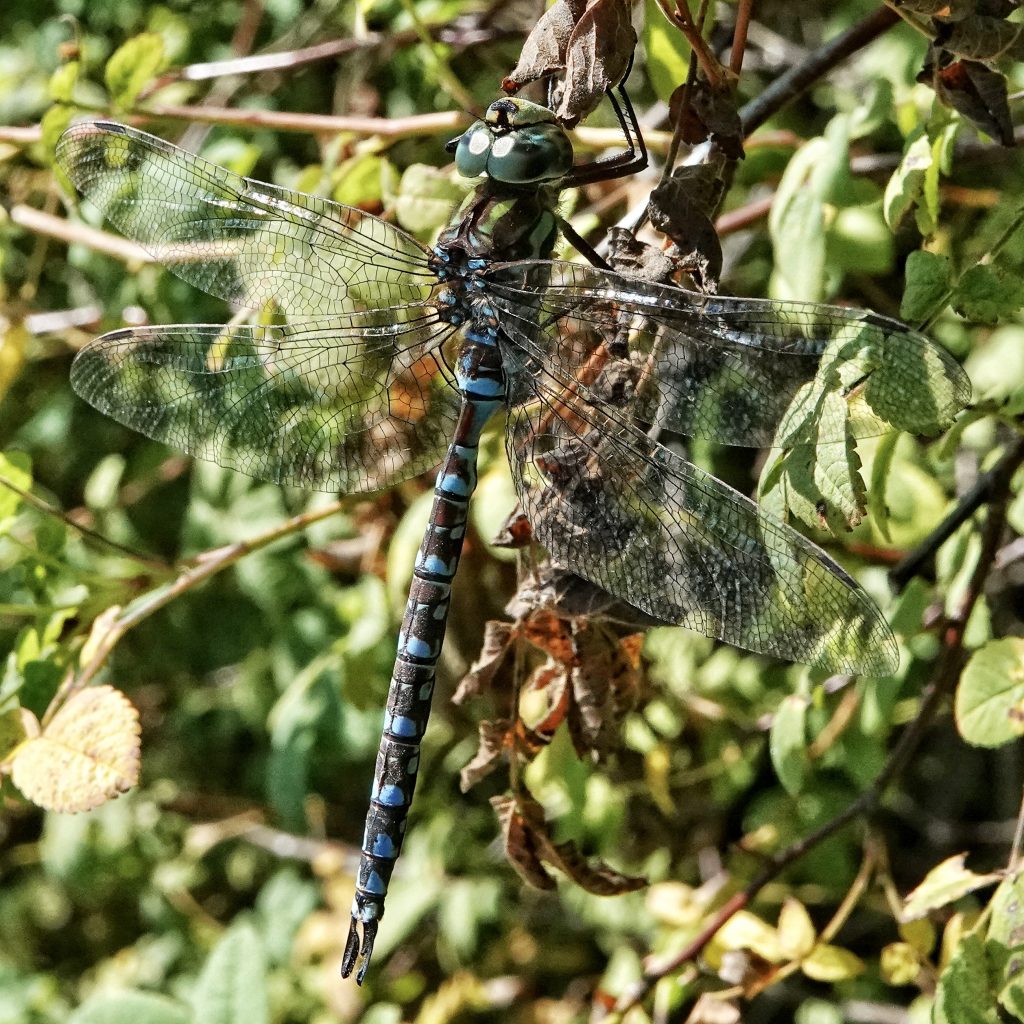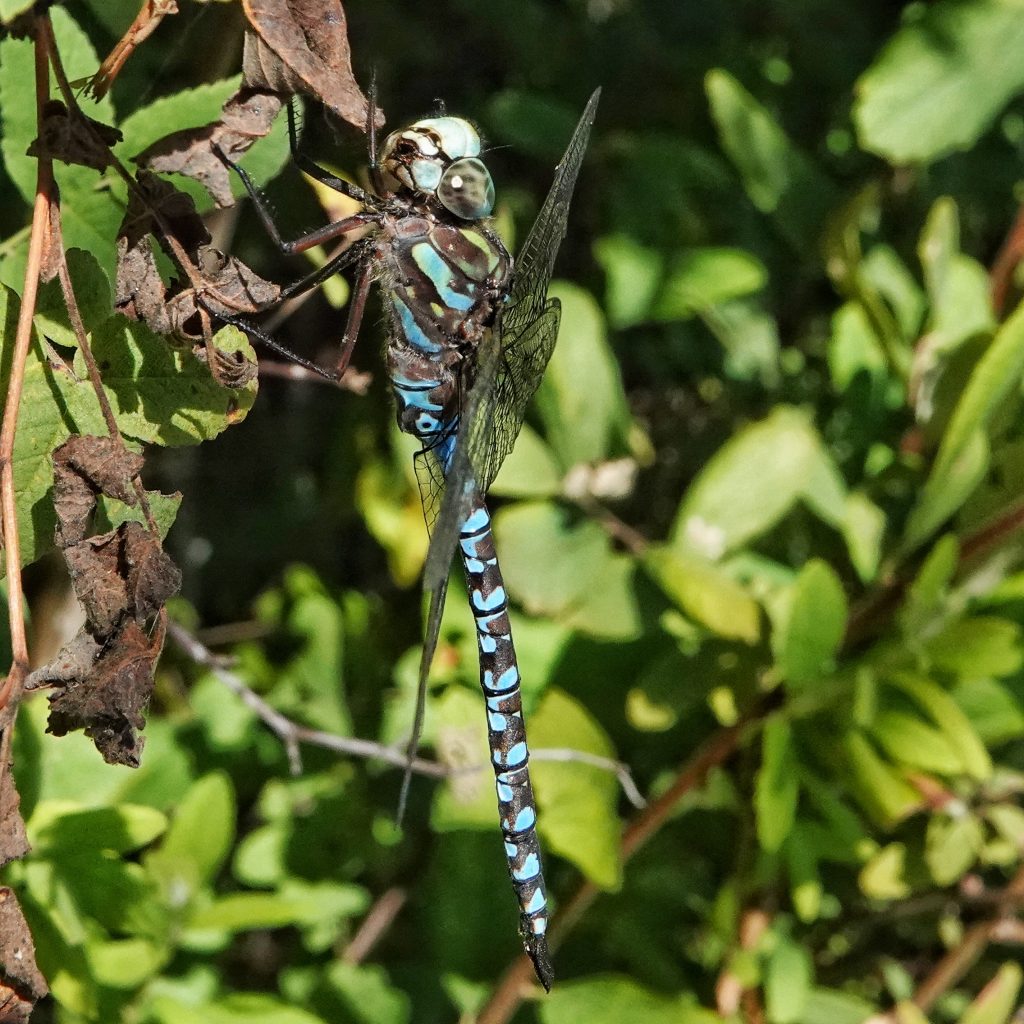
The only time I had previously seen a Canada Darner was a little over 5 years ago on a little feeder creek to the Cowlitz River, outside of Kelso, Washington. I had no idea which mosaic darner (Aeshnidae) I was swinging my net at, but as soon as I removed it from the net and saw the indented front thoracic stripe I knew it was was not a common one. My first thought was that it was a Lance-tipped Darner, because I forgot that it is the female that has the lance shaped cerci (appendages at the end of the abdomen), but Jim Johnson and the other experts on Facebook soon disabused me of that notion, concluding that it was instead a Canada Darner.
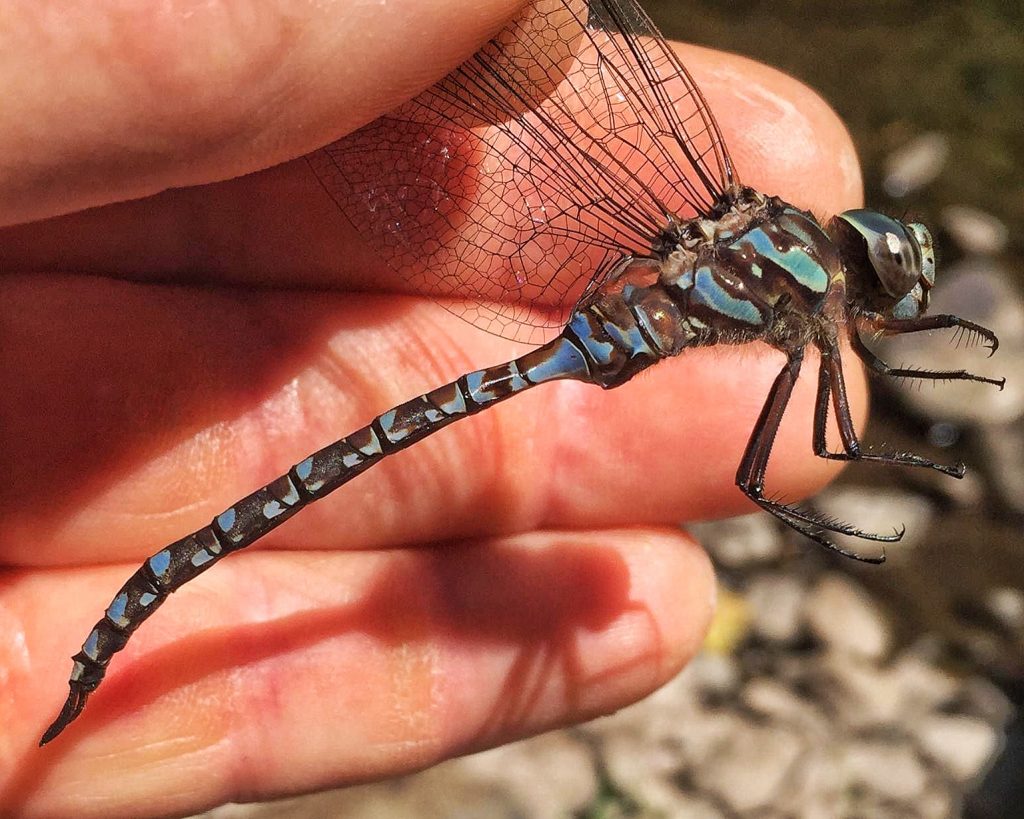
There were a couple of interesting aspects to that find. For one thing, not only was it a new record for Cowlitz County, it was a new record for all of the lower elevation parts of sw Washington or nw Oregon. And almost as interesting to me was that it was found on a creek, since these are still water dragonflies. They do travel quite a bit directly after emergence, but looking through satellite photos it seemed like the closest habitat was at Silver Lake, which is about 7 air miles northeast, and at 500’ elevation is still far lower than these dragonflies are usually found. But access is limited at Silver Lake, the best ones are in the state park where you can’t net bugs, and mosaic darners are almost impossible for me to identify in flight, so I had never confirmed my hypothesis.
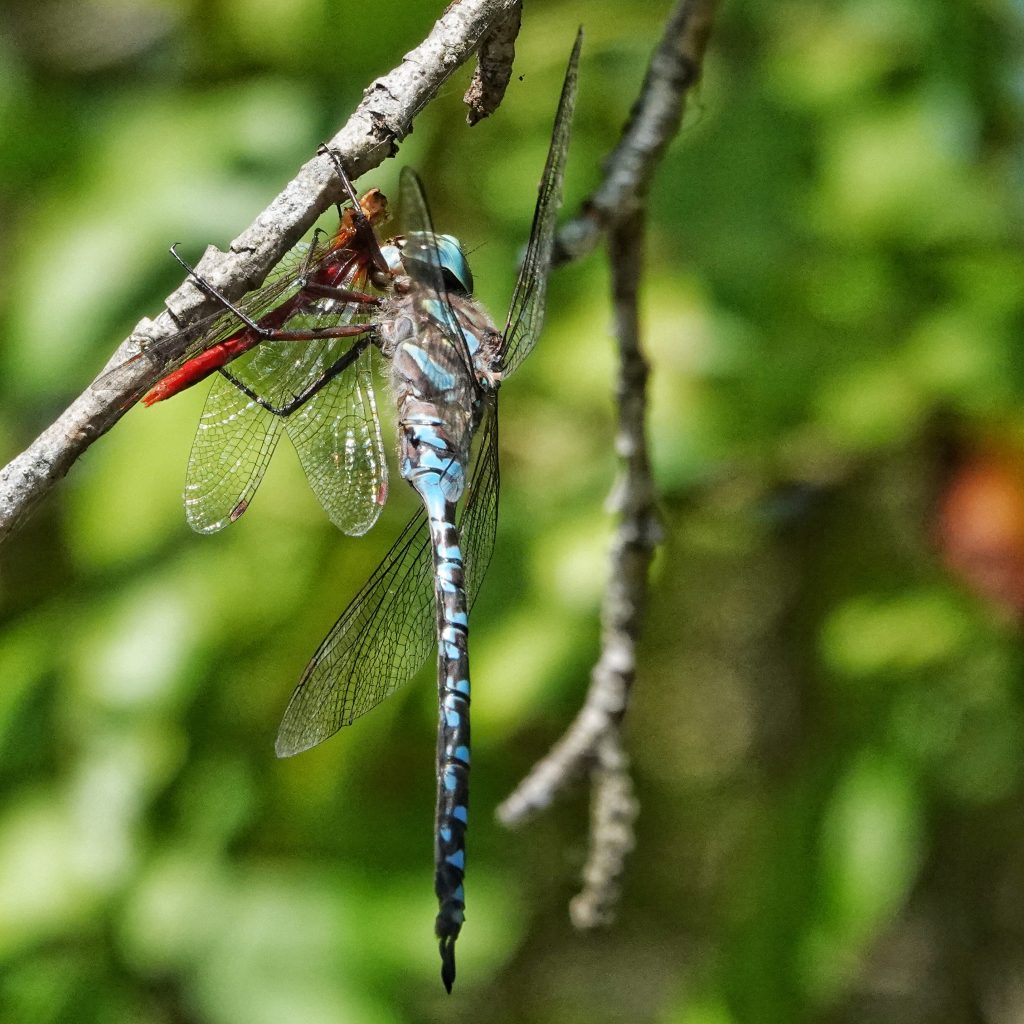
Until the trip Pam and I made to that area two Sundays ago. I was walking the boardwalk trail at Seaquest State Park (which I talked about in my profile of the Dot-tailed Whiteface) when I saw a male dragonfly alight in a nearby tree carrying prey (which I think was an Autumn Meadowhawk) . It was well above my head, but allowed me to get close enough to be pretty sure it was a Canada Darner. I was thrilled, and had to calm my breathing to steady the camera, since it is always exciting to find something really cool that is also evidence supporting a hypothesis.

And then another one hung up just below eye level in the tree to my left. It was quite cooperative, and allowed me to take dozens of photos from a variety of angles, even letting me get so close I had to fully retract the zoom on the camera just to get it within the frame. I later found a female perched on the stem of a Nuphra polyseppala, and finally another male hanging up in the shade. Although I have since found out that Canada Darners frequently hang up when away from water, darners in general are not perchers, and it seemed like spectacularly good luck to find four specimens, of an unusual species, doing so in one afternoon ramble.
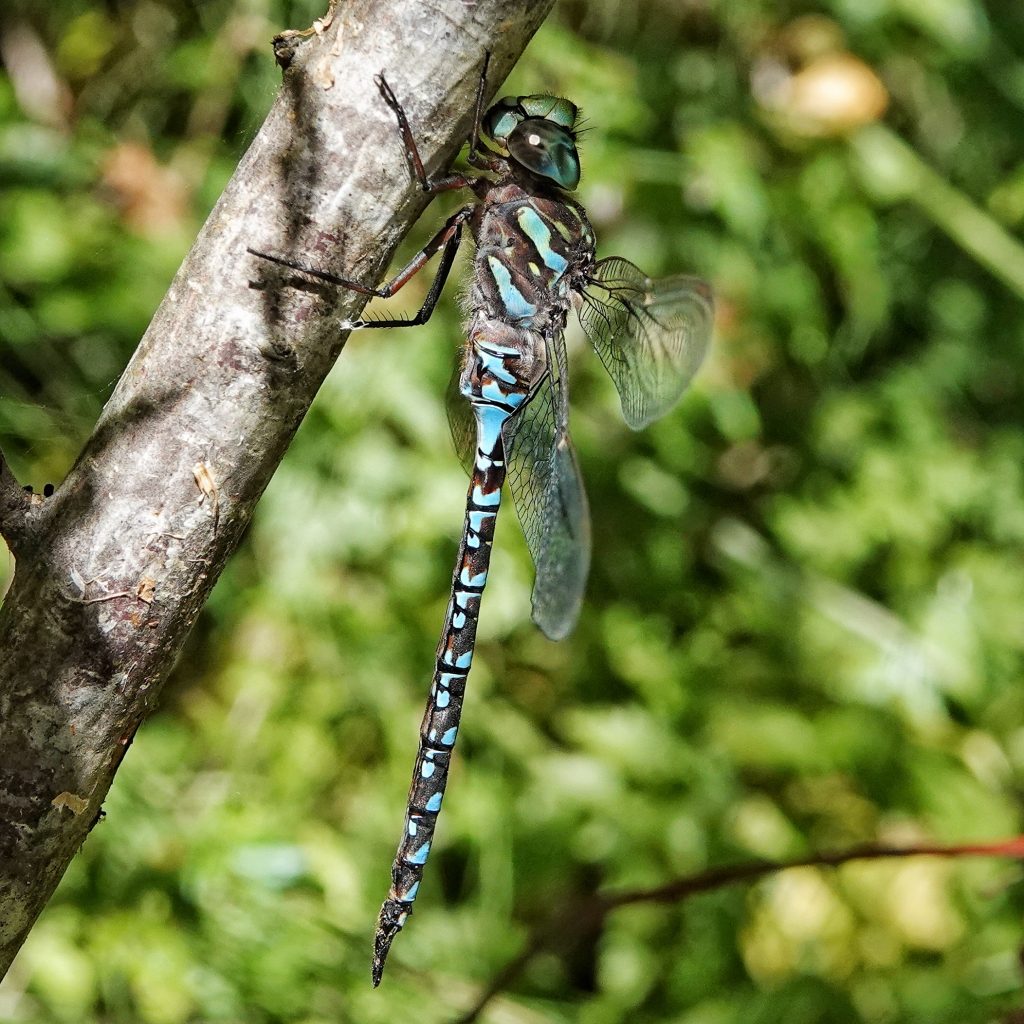
Male Aeshna canadensis fly fairly short beats (usually 30-65’) near shore at about waist height, hovering or moving slowly over sedges and grasses,occasionally ducking into the vegetation to look for females, who tend to stay hidden until they’re ready to mate. Breeding usually occurs in shoreline vegetation, and ovipositing is into the stems and vegetation of sedges, grasses, mosses, algae, and even mud. According to Pollard/Berrill; (1992), this species prefers somewhat acidic water with a ph below 6.2.
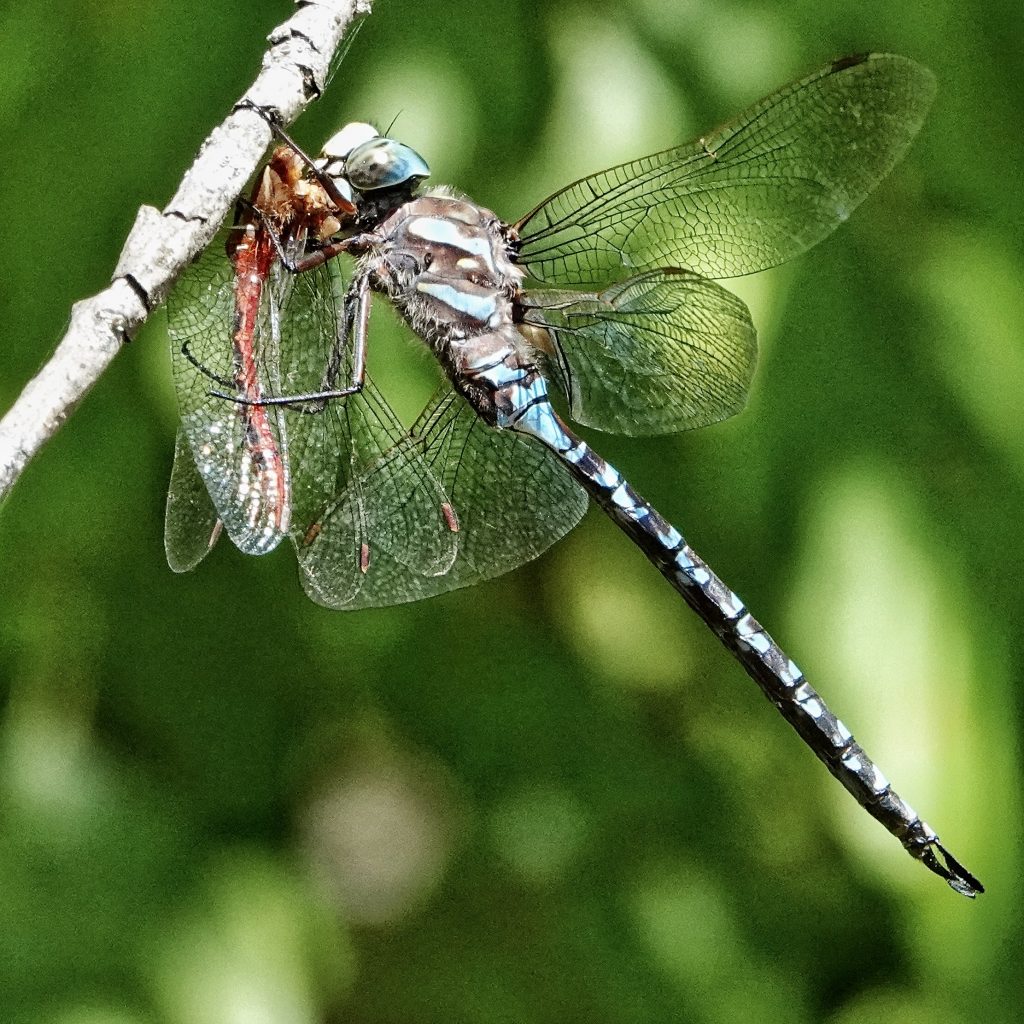
Using field observations and isotope testing, Schilling et al.; (2020) found that some populations of Canada Darners in Ontario and Minnesota had a north/south migration, with those in the south emerging in late spring, flying north for about a month and breeding there. Those offspring overwintered once, and emerged in late summer/early fall and migrated south to breed in the fall. Those offspring then over wintered twice, and emerged in spring to become the northward migrators. They are the first North American Aeshna to be documented as migrators.
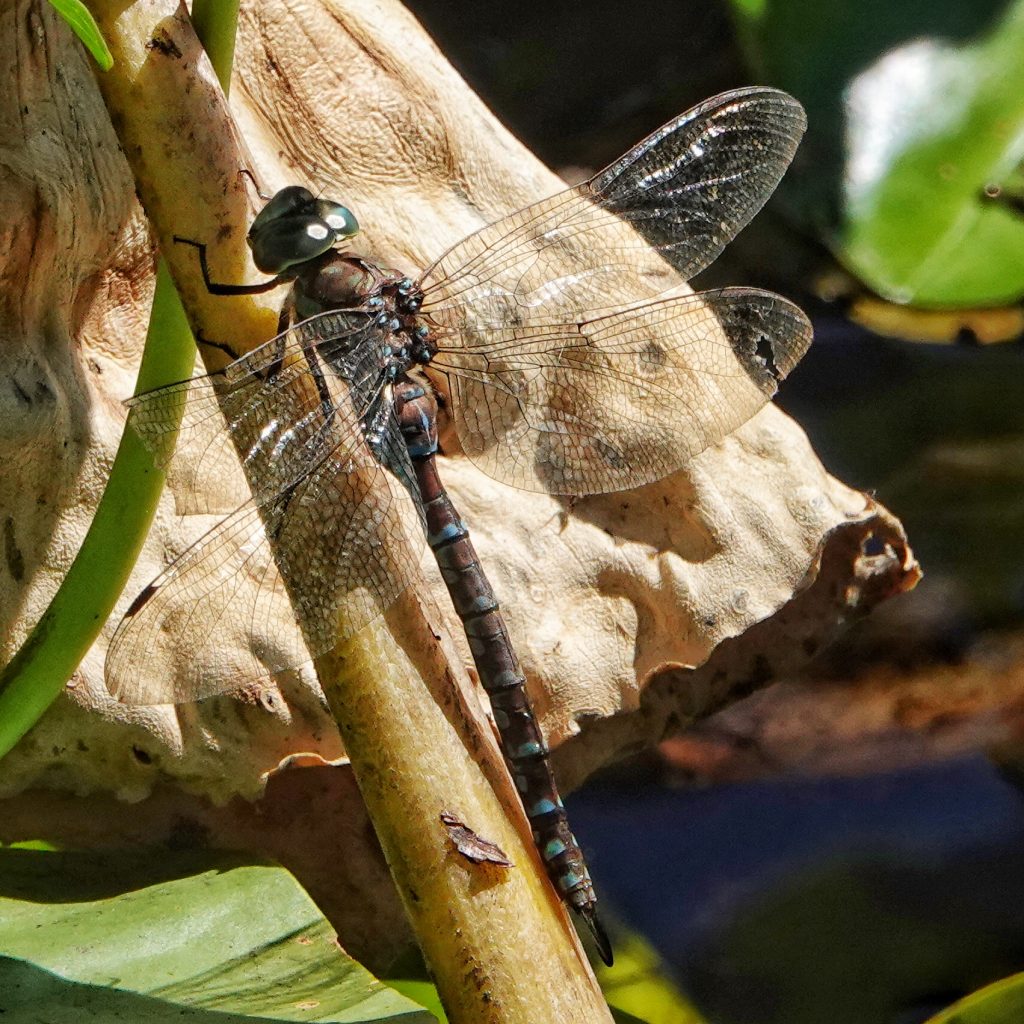
Description-Large (total length 66-73mm, wingspan 90-100mm) mosaic darner with a notched lateral front thoracic stripe, green eyes, a white to tan face without a transverse black line, and pale spots on most segments of the ventral abdomen; males are mostly black and blue, with simple, elongated appendages; females can be marked with blue or yellow green, and have simple, rounded cerci.
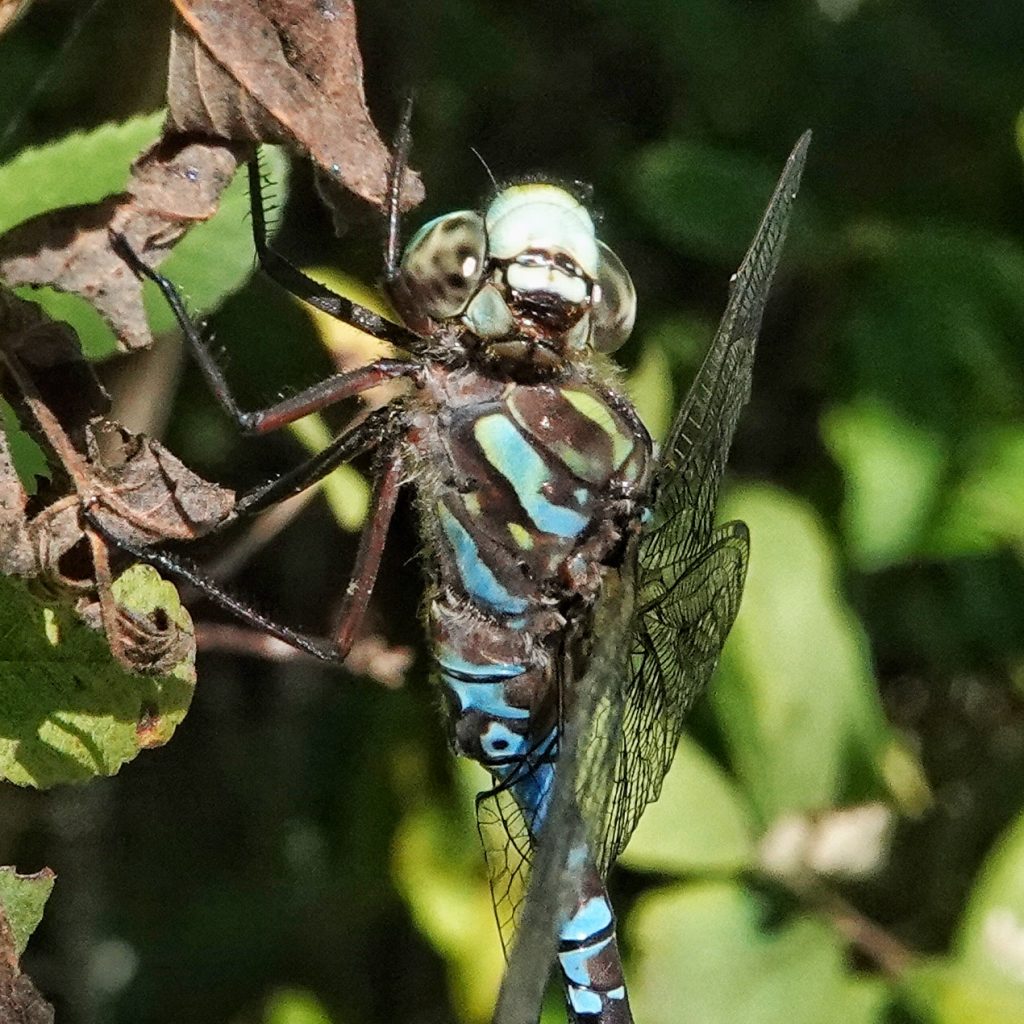
Similar species–Aeshna constricta (Lance-tipped Darner) lacks pale spots on ventral abdomen, males have paddle-shaped appendages, and female appendages are lance shaped; A. eremita (Lake Darners) lack pale spots on ventral abdomen, have a black line across the face, and have a notch in the rear thoracic stripe; A. subarctica have a black line across the face, blue to turquoise eyes; other darners do not have notched lateral front thoracic stripe.
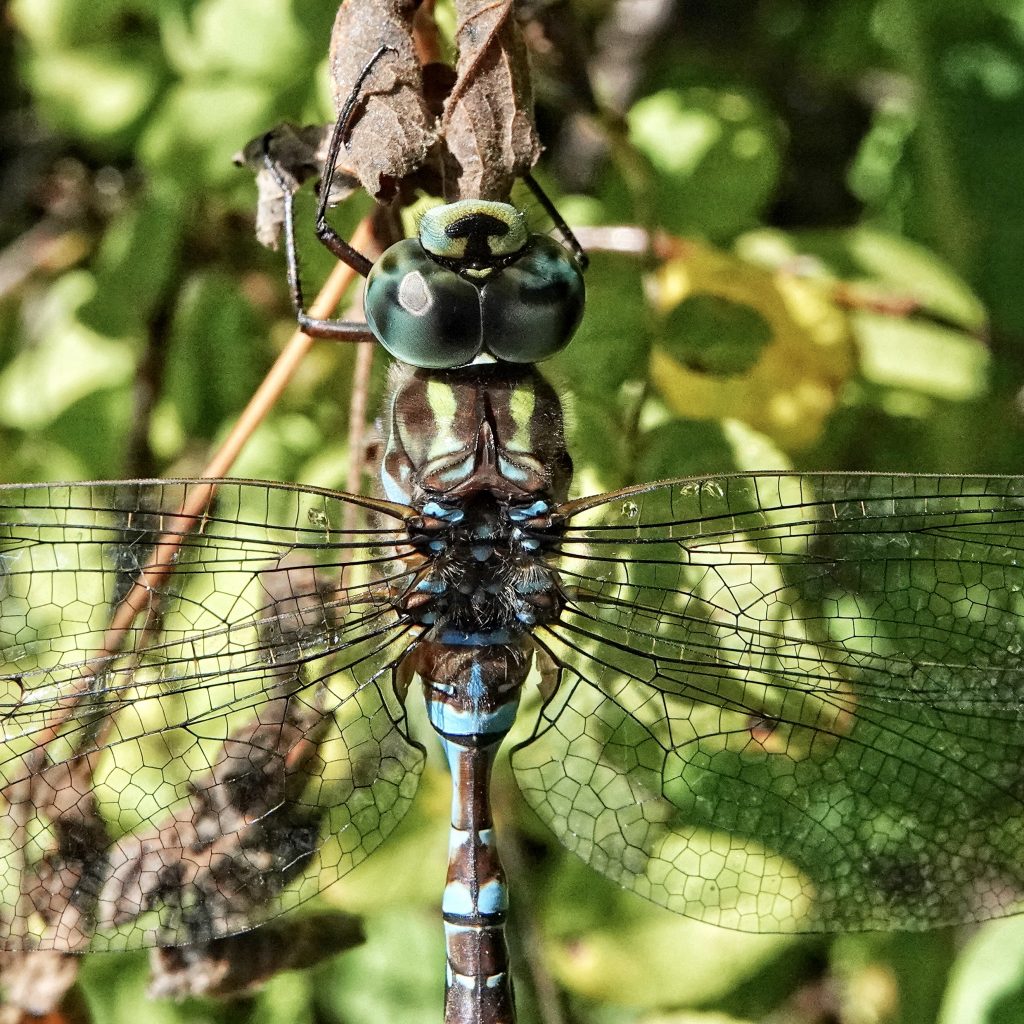
Habitat-Ponds, lakes, sloughs, usually marshy or boggy, and/or with abundant emergent vegetation, and usually in forested areas; more common at elevations above 3,000’, but apparently found in at least some lower elevation areas.
Range-Northern North America; in our region found mostly in the Cascades and it’s foothills, and in the Rockies.
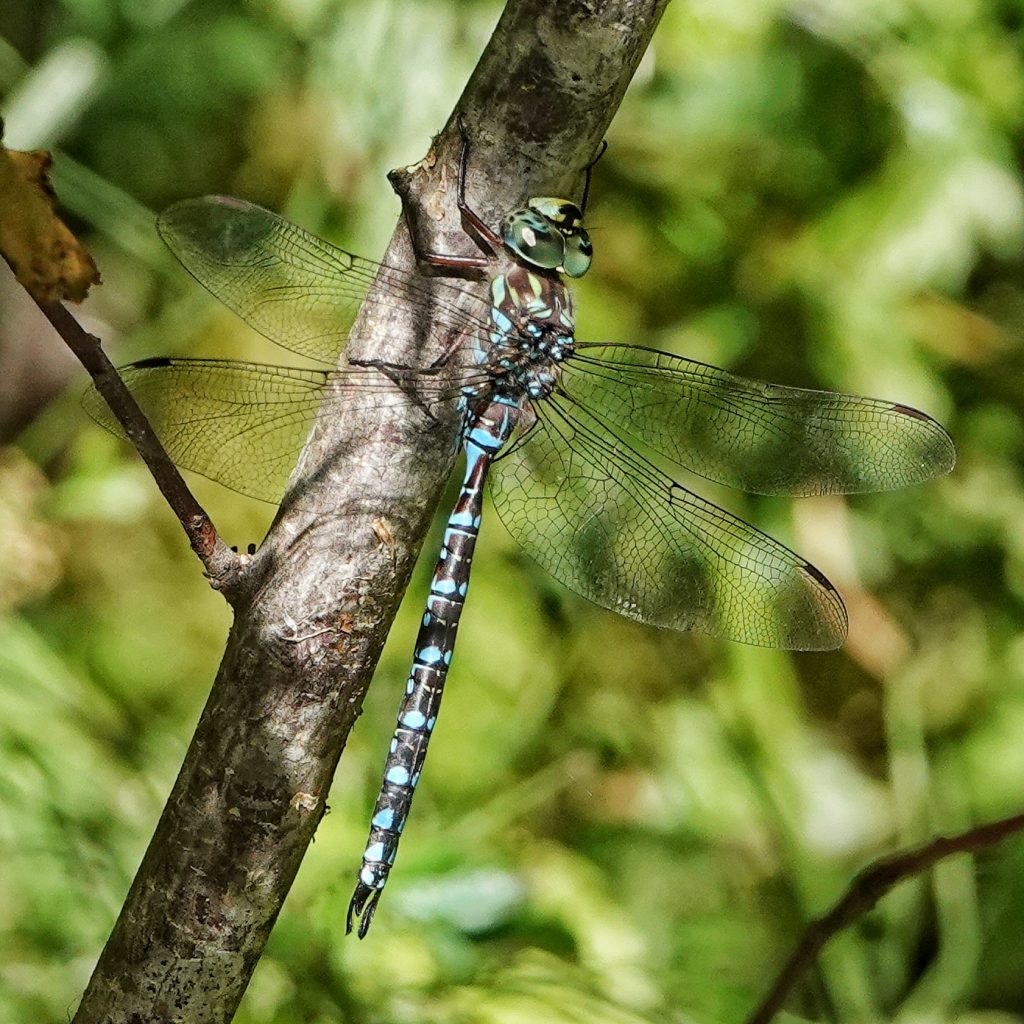
Eats-Larvae are stalkers, and eat freshwater gastropods, worms and flatworms, insects and their larvae (including other odonates), small fish and amphibians; adults are hawkers, flying in search of prey, and preying on flying insects, including other odonates.
Eaten by– Mostly birds, fish, and amphibians
Adults active-July to October
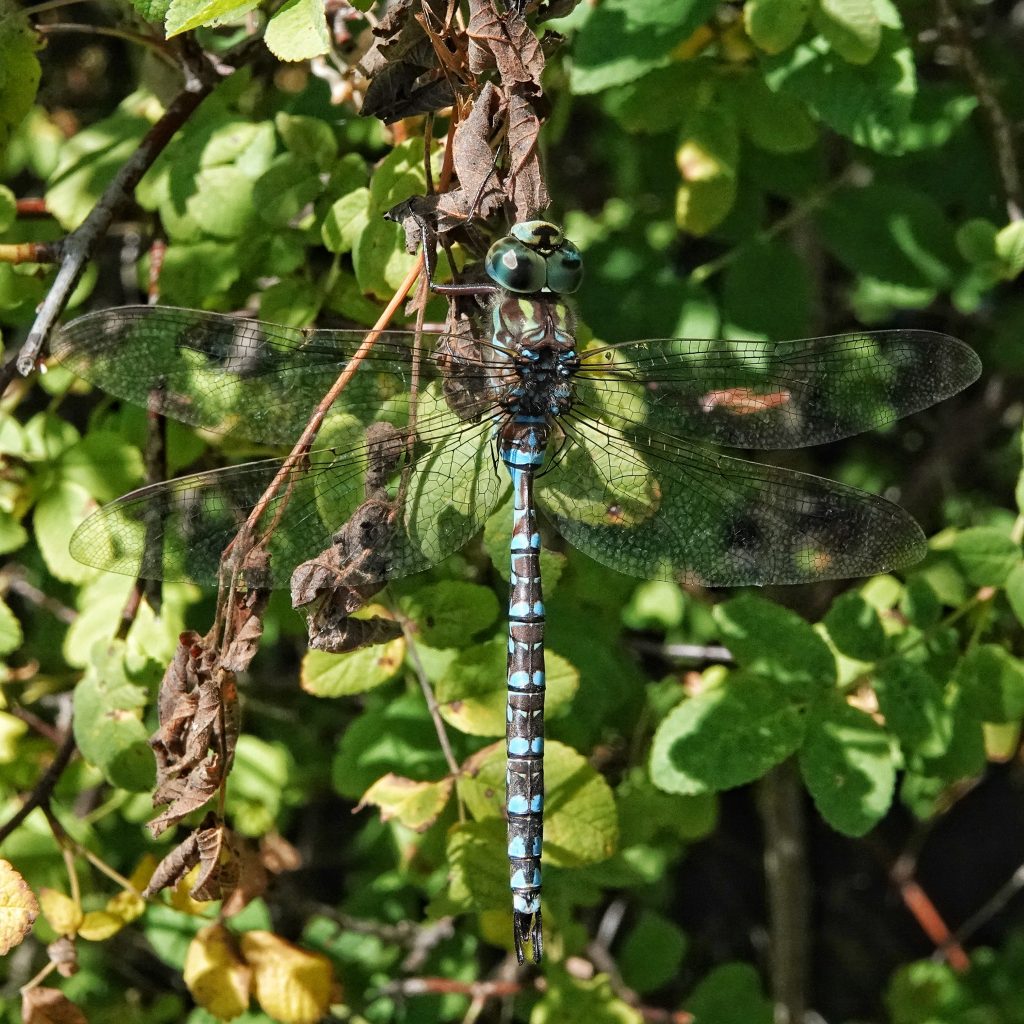
Life cycle-Eggs are inserted into vegetation or mud, at or near the waterline, generally away from the shoreline; usually overwinters twice in the nymphal stage before emerging in its winged form; immature adults may travel extensively before looking to reproduce; may live up to 70 days after emergence.
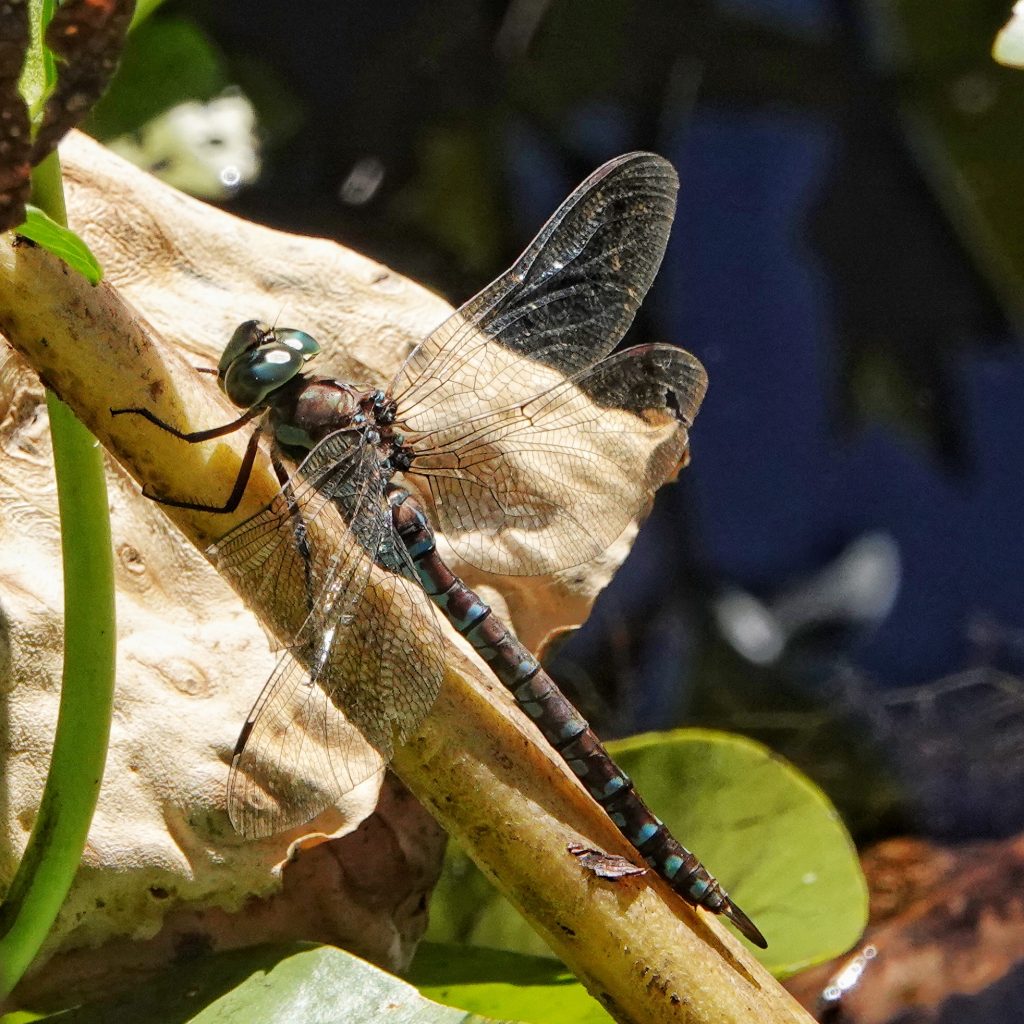
Etymology of names-The origin of the name Aeshna is obscure, but it has been suggested that it is a corruption of the Greek word for ‘ugly/deformed’, or a corruption of the Greek word for ‘spear’, which seems more likely. The specific epithet canadensis refers to the fact that the type specimens were found in eastern Canada.
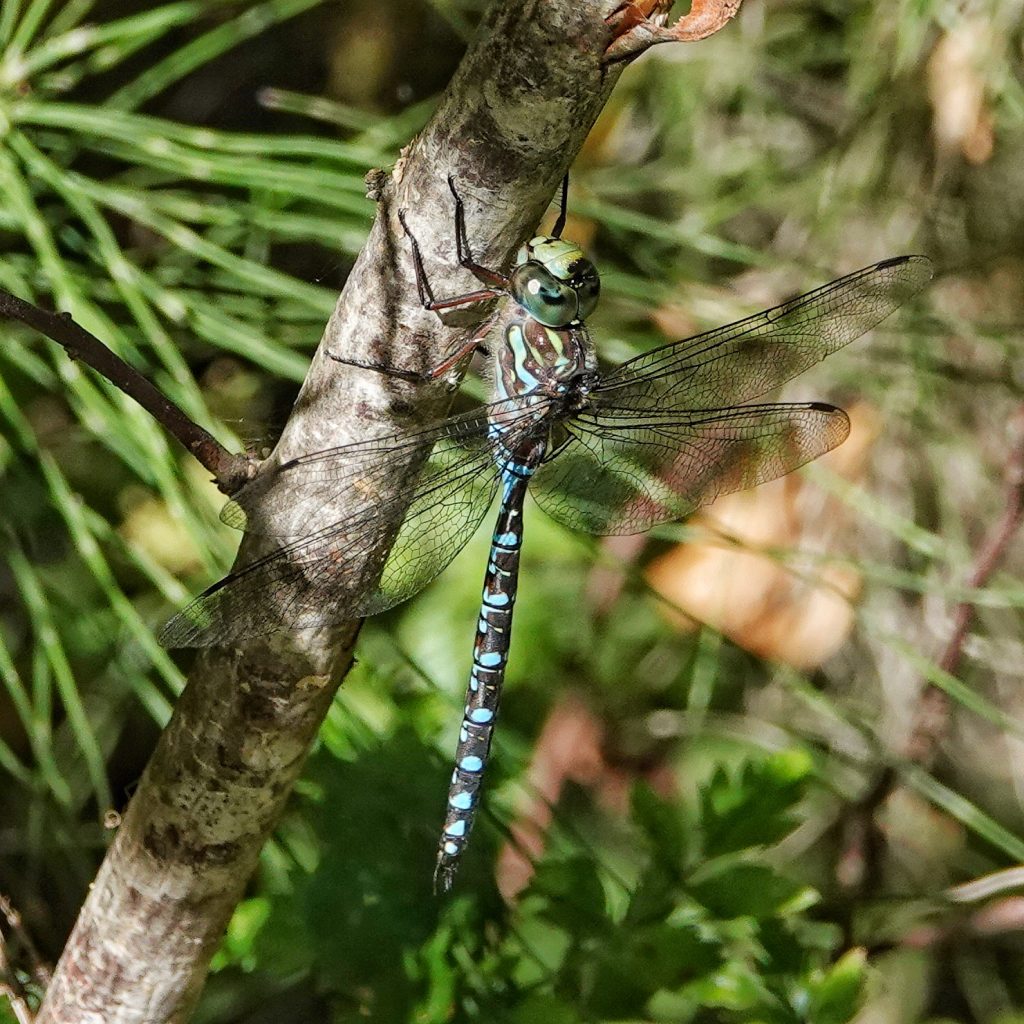
ADW: Aeshna canadensis: INFORMATION
Canada Darner (Aeshna canadensis) – Cowling Arboretum – Carleton College
